The first Wednesday of March, one day after the beginning of our meteorological Spring is suddenly here. February flew by in a blur. The weather has veered from heavy rain and high winds to occasional sunshine and sharp frosty mornings.
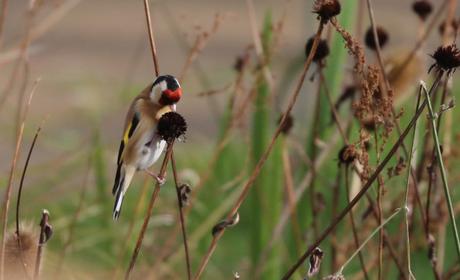
Goldfinch on Rudbeckia seed head
The cold weather brought in a trio of Goldfinches, to feast on the seed heads of Rudbeckia, Teasels and Astilbe. The males and females are similar but females are slightly duller with less red on their face; the trio looked masculine. And made me glad I had not cut back any of the overwintering seed heads, despite the untidiness and my itchy fingers.
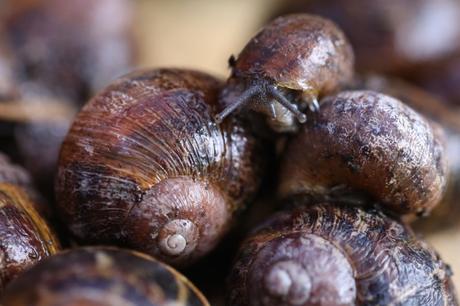
Revealed – Garden Snails
We kept warm by spending a whole week digging out the rocks and soil of an enormous ground elder, riddled and inherited rockery, most of which was wheelbarrowed into a large skip. As the drab brown sandstone rocks were dismantled, we discovered family groups of snails. As the food of Thrushes, snails always remind me of Summer and listening to the ‘tap, tap, tap’ of a Thrush as the snail shell is bashed on something hard to reveal its contents – one of my favorite summer sounds.
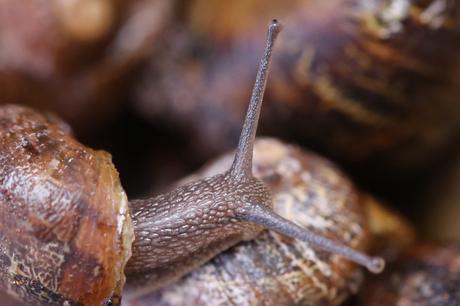
Helix aspersa Common Garden Snail
The larger mature snails hibernate during winter months and waken up in Spring. Mostly they were still dormant but one brave small snail began to explore. Shortly they will become more active especially on cloudy or rainy days, they dislike desiccating hot sun.
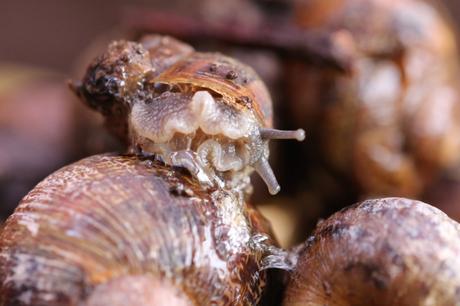
Common Garden Snail ‘Foot’
Underneath the snail, which at it’s fastest is reported to travel 1.3 centimetres per second is a ‘foot’, a flatish muscular organ. Mucus is released to help the snail glide over rough surfaces, leaving a tell tale meandering trail. Apparently they have a complicated and interesting sex life and can produce 430 babies a year. On the upside they are one of natures cleaners, consuming debris, sadly they are also partial to a prized vegetable leaf. As well as Thrushes – Ducks, Lizards and Frogs eat snails. We’ve cleared the rockery area to make space for a recycled greenhouse and small pond with wildlife friendly planting where we hope visiting Frogs, Wild Ducks and Thrushes will have a field day on the snails.
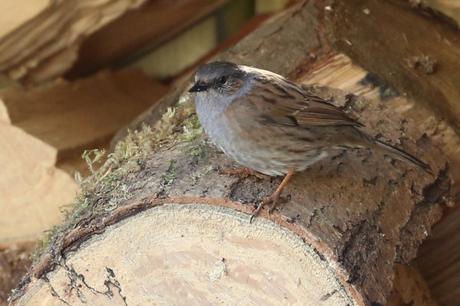
Dunnock in the woodstore
Since my last Wildlife Wednesday post on our Robins, we haven’t seen any sign of nesting (yet) but the poor little Dunnocks, subject of many a Robin attack are nest building in one of our wood stores. This little brown bird also has an interesting sex life and pair up in unusual and complex ways. In their determination to carry on their gene pool, they can pair male and female, one male two females, one female two males and several males and several females. All very liberal!
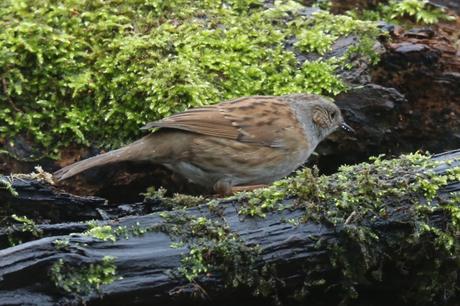
Dunnock creeping along the ground
Hopefully when you read this, you are not eating. Often two males mate with one female , the female hopes both males will help her raise the chicks. The dominant male will try to remove the rivals sperm by pecking the female’s rear end (the cloaca – through which both faeces and eggs exit) and encourage her to eject it. Dominant male mating then follows. Liberal and ghastly!
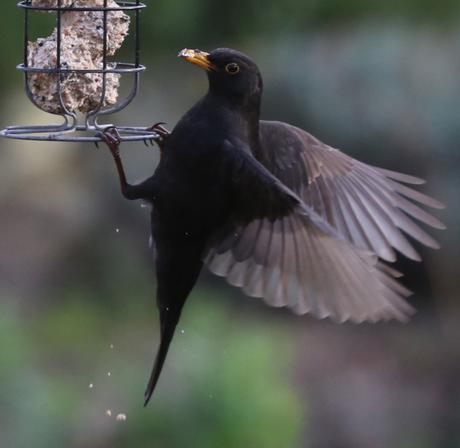
Male Blackbird, usually a ground feeding bird.
Less complicated are our Blackbirds, this fellow is singing his heart out. The Black Feathered males with bright yellow bills and eye rings are easily identified. Juveniles are similar to females, the RSPB explain how to identify the juvenile male wing bars.
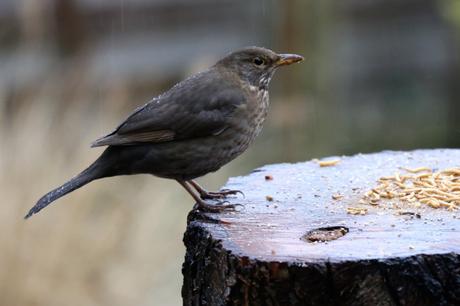
Female Blackbird or is it a year old juvenile?
We are quite hopeful there is a Blackbird nest just beyond our vegetable garden in an area of overgrown brambles, grasses and emerging wildflowers with pioneer native Alders growing along the drainage ditch and Birch trees colonising the bare areas. Both tree species will be rich in insect life, for the birds to forage on. Technically this area is a no mans land, land locked between houses and fields with no hope of future access. Many a snail and slug has been delivered here, for foraging creatures further up the food chain.
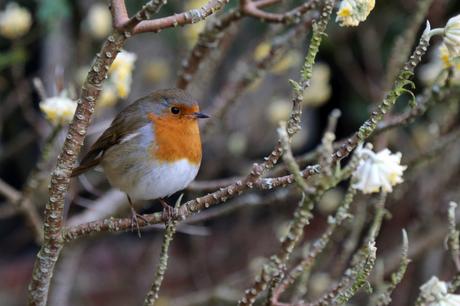
Edgeworthia chrysantha and Robin
And finally on a more colourful note, this last photo was taken on Sunday morning in the RHS Wisley Garden, I had a couple of hours to while away waiting for my daughter to finish her netball training. As I leant forward to smell the fragrance of the Edgeworthia, a very round Robin hoped onto the branch, inches away from my face, one of those uplifting and life affirming moments. There is a great deal to worry about in life but there is also a great deal to be grateful for and enjoy in the natural world.
With many thanks as always to the lovely Tina and her wonderful Wildlife Wednesday meme, please take a look at other contributions from across the globe.
Happy Wildlife Watching!
